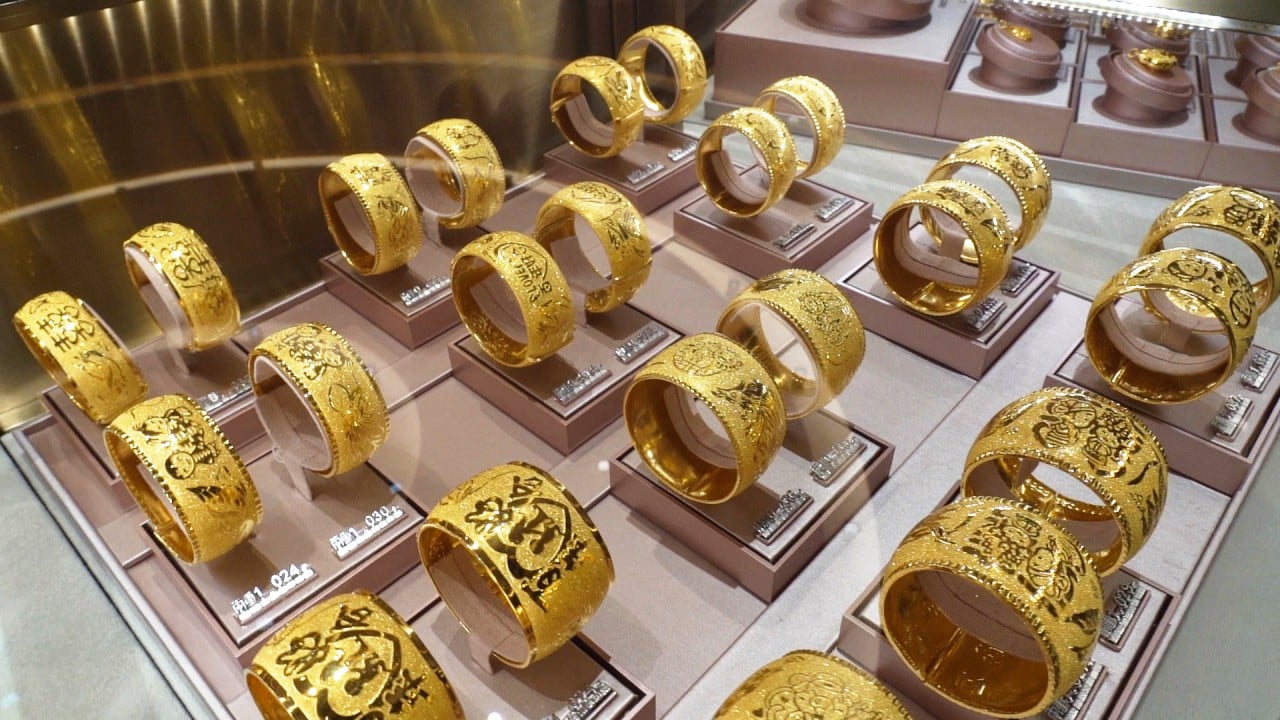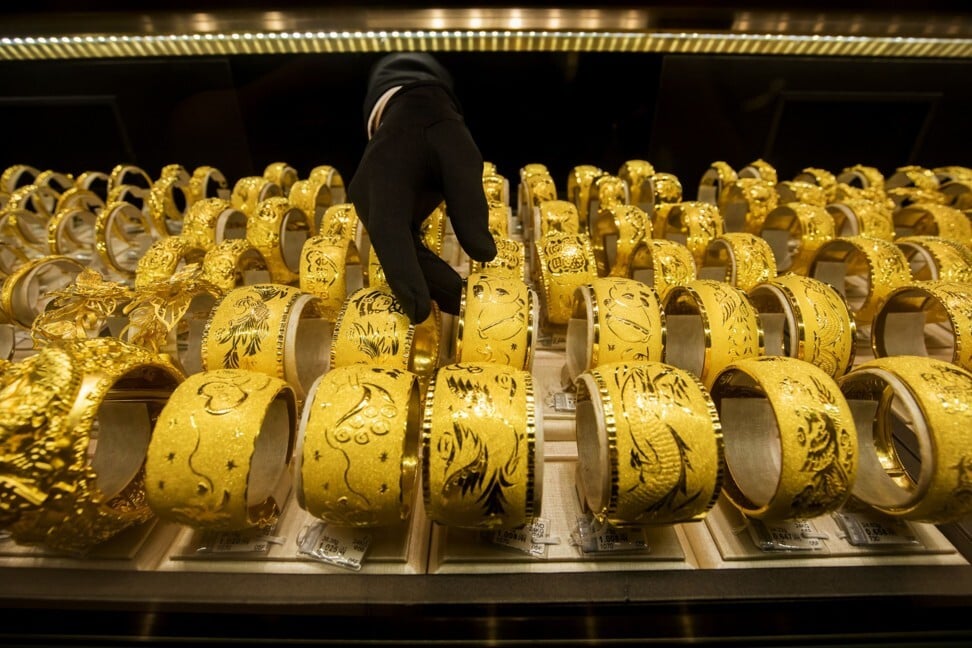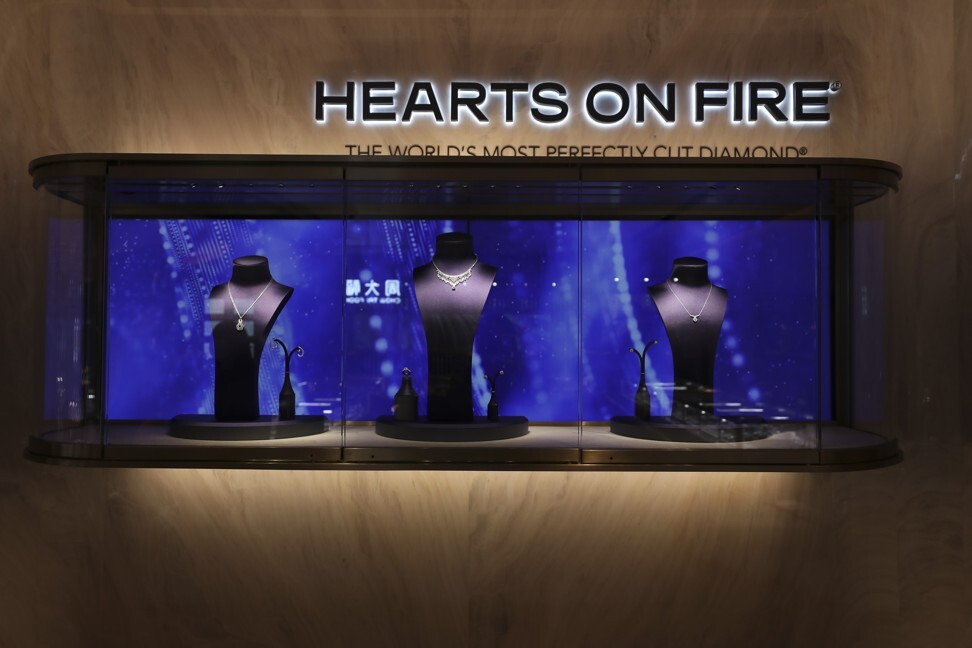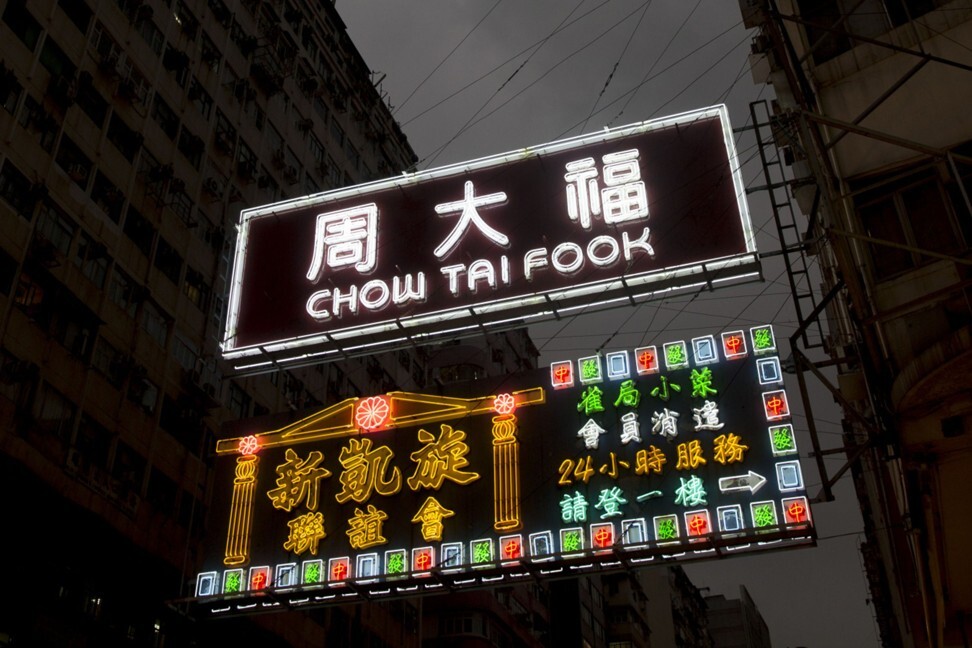
How Chow Tai Fook became one of the biggest gold and jewellery chains in the world
- Chow Tai Fook started out selling gold, transformed the trade with its 999.9 standard, a guarantee of purity, and expanded into diamonds and jewellery
- From a single shop in Macau it has grown to more than operate over 4,000 worldwide, and embraced online sales. Twice it paid record prices for rough diamonds
In the Victoria Dockside development on Hong Kong’s harbourfront are two very different iterations of the Chow Tai Fook brand.
Down in the basement of the K11 Musea mall is one of the jewellery retailer’s many stores – a reassuring, somewhat predictable sight at malls in Hong Kong and across China.
On an upper floor, meanwhile, is a VIP showroom, all airlock doors, sensational harbour views, five-star hotel decor and lavish display cases. It’s an illustration of the range of customers the company welcomes, and a reminder of the journey Chow Tai Fook has made since its humble launch selling a single product.
Chow Tai Fook was founded in 1929 in Guangzhou, in southern China, by Chow Chi-yuen, a native of Shunde, a town 45km (28 miles) to the south of that city; in those days, it operated solely as a goldsmith. In 1938 the company opened its first shop in Macau, then one in Hong Kong the following year.

It was in 1956 that the company really started to expand under the control of Cheng Yu-tung, son-in-law of Chow, who had taken him on as a penniless apprentice. Cheng, who died in 2016, went on to become Hong Kong’s third-richest person.
Cheng was the central figure in the success of the company, transforming Chow Tai Fook from a shop selling bullion and traditional gold accessories to a jewellery retailer in the modern sense, and expanding into a host of other businesses, many of which his companies are still involved in today, including property (New World Development), hotels (in particular the Rosewood group), energy, aviation and urban transit (Citybus and New World First Bus).
Yeo’s: a canned history of the Singapore food and drinks giant
Today Chow Tai Fook employs more than 28,100 people and deals with about 6,000 suppliers.
“I’m lucky – I worked with Dr Cheng for a long time,” says the company’s managing director, Kent Wong Siu-kee, who joined Chow Tai Fook in 1977. “He made all the important decisions that set the tone” for the company.
It was also in 1956 that Chow Tai Fook introduced so-called 999.9 gold, offering an unprecedented guarantee of purity. It quickly became the standard in the city, and was officially adopted by the Hong Kong government in 1984.

03:22
The story of Chow Tai Fook – from goldsmith to jewellery conglomerate
The company moved heavily into diamonds, acquiring a licence from De Beers, which had a monopoly on their supply, in the 1960s. By the 1970s, it accounted for 30 per cent of diamonds imported into Hong Kong.
After abandoning its mainland China operations in the late 1930s when the second Sino-Japanese war broke out, across the country, the company did not open stores there again until the 1990s. Wong himself was handed a role to research the market there in 1993. After establishing a pilot store in Shanghai, Chow Tai Fook opened its first proper store in mainland China in Beijing in 1998.
In the early days, Wong says, the market was almost entirely commodity-driven, with very little craftsmanship involved. As he puts it, part of the company’s job was to educate the local market on the meaning of jewellery.

When that business started to grow, it did so at a dizzying pace. By 2002, the company had opened its 100th outlet in mainland China; by 2010 it had 1,000, and by 2014 had opened its 2,000th store there. At the time of writing it has 4,012 outlets there, in addition to 82 in Hong Kong and 59 elsewhere.
The company expanded so rapidly after returning to mainland China, Wong says, by following a template in everything from storefront design and product mix to staff training.
“When I joined the company in 1977, it had eight stores,” he says. “Now it has over 4,000 stores. It’s a big change, from a small goldsmith to one of the biggest jewellery corporations.”

There are two main reasons for that, he believes: a corporate culture built up over 90 years, combined with a willingness to innovate. “We’ve benefited from the opening of the Chinese economy,” he adds.
“We first stepped into mainland China to open a jewellery cutting and manufacturing facility in Guangdong. It gave us [a] very solid infrastructure to ensure our production is top class.”
These days, in addition to an “ingenuity centre” in Shunde, which takes care of pieces that require more complicated craftsmanship, the company has its production centre in Wuhan, central China, for mass-produced jewellery, and a research and development centre in Shenzhen, southern China, which focuses on production innovation and advanced monitoring and analysis of existing operations.
Now we can understand more about customers and what they’re looking for, and better provide them with individual service. More important than making sales, we can make friends
Outside mainland China, Hong Kong and Macau, the company has stores in Taiwan, South Korea, Japan, the United States and across Southeast Asia: Singapore, Malaysia, Cambodia, the Philippines, Thailand and Vietnam.
“We believe they have the same culture as China,” says Wong of the latter countries. “They love gold and diamond jewellery pieces, and they love to buy them to express love. That’s the basic consideration whether we open in a country.”
The company has bought of some pretty gigantic precious stones over the years. It twice set the record for the highest price paid for a rough diamond, in 2010 and 2017, on the first occasion paying US$35.3 million for the 507-carat Cullinan Heritage diamond, which became the centrepiece of the A Heritage In Bloom necklace, unveiled in 2015; and in 2017 it spent US$71.2 million on the 59.6-carat Pink Star cut diamond.
In addition to the dramatic recent growth in its number of stores, the company has also expanded through acquisition, buying US diamond brand Hearts on Fire in 2014, and Enzo, a specialist in natural coloured gems, in January 2020. It has launched several brands of its own, including, in 2016, its T Mark diamond label.

Despite being part of a generally conservative industry that has not always been the most enthusiastic about the digital revolution, the company is committed to the application of technology. Chow Tai Fook has been selling online for a decade, but recent digital initiatives have pushed things forward on a number of fronts.
They include the so-called cloud kiosks rolled out in its stores and at other locations such as hotels and railway station VIP lounges, which offer customers the chance to search for and buy items from the company’s entire product range, as opposed to the necessarily limited selection available within a physical store. Cloud kiosks had been installed in about 1,000 locations by September last year.
Chow Tai Fook has also introduced CloudSales 365, a system of 24/7 customer service offered through the We Chat Work platform connected to the company’s e-shop to reach younger shoppers. And through a platform it calls D-ONE, the company allows buyers to order customised jewellery designs, which are ready for delivery within 24 hours; custom orders previously took 30 to 40 days to manufacture and deliver.
To the company’s surprise, sales from cloud kiosks and CloudSales 365 in the first half of the current financial year accounted for 1 per cent of its sales in mainland China.

Clearly 2020 has not been the worst year for a retailer to have recently invested in technologies like these, and the effect of the pandemic has been to accelerate the funnelling of the company’s customers towards digital channels.
“During the Covid period, most retail businesses have been almost locked down,” says Chow Tai Fook executive director Bobby Liu Chun-wai. “How can retail survive in this market? We’re using this technology to keep our connection with our customers.”
Between April and September 2020, the company has calculated, it touched base with more than two million of those customers via CloudSales 365, half of whom it hadn’t had any contact with before. “Now we can understand more about customers and what they’re looking for, and better provide them with individual service,” says Liu. “More important than making sales, we can make friends.”

Other aspects of the business have undergone a digital transformation in recent years. Like other diamond sellers, Chow Tai Fook has long provided grading reports, certifying the authenticity of a stone and providing information about it.
Traditionally, those reports came in the form of physical certificates, with all the issues of storage, loss and degradation that implies. Since 2018, the company has been working with leading gem grader the Gemological Institute of America (GIA) to provide diamond-grading reports digitally via blockchain.
“Every step of the journey from ground to product is recorded on the blockchain,” says Liu. “It means customers can feel comfortable buying diamonds.” This includes ensuring that their provenance is ethical.

For Wong, it’s all part of a focus on experience that he believes helps the company stand out among its competitors. “We always think about how can we build value for customers. Why does a customer buy?” he says. “Ultimately, people buying jewellery are buying a dream. We not only sell product; we sell content and occasion.
“The jewellery industry, most of the time, puts too much focus on product, and ignores people’s experiences.”

